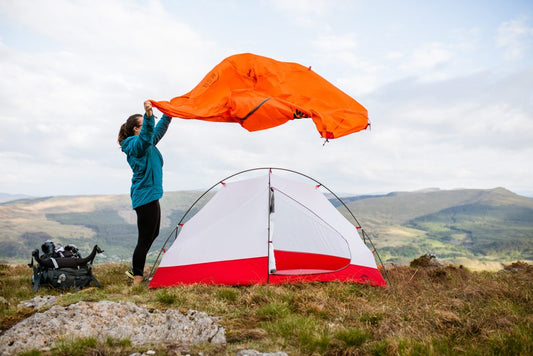In an age dominated by terrestrial modes of transport, our focus has shifted away from the aquatic pathways that once served as our primary modes of exploration.
The view from the water, once common amongst travellers, has become more of a rarity in the modern narrative of adventure. Many find peace high up in the hills or within forest trails, but with these areas becoming somewhat busier and providing less solitude, a new appreciation for journeying by the water’s edge is offering a slightly different perspective.

Enter Loch Etive, nestled deep in the heart of the Scottish Highlands, a ribbon of water winding its way through rugged mountains and moors. Mist hovers across the surface of the loch, painted by an exchange between winter’s cool, moist air and the warmer water temperatures. With its surrounding Ben’s casting their shadows, Loch Etive has a rich yet somewhat private history, shaped by glaciers and ancient folklore. Still waters reflect the ever-changing sky, offering a canvas only to be broken by the slow rhythm of our paddles catching in the deep waters.
Even with the arrival of rain, Loch Etive remains captivating, shrouded in mystery, and droplets rippling upon the water's surface. Paddling a packraft with enough gear for an overnight stay feels something like being strapped into an inflatable, reclined sofa with a rucksack-shaped weight between your legs. The flexible nature of the raft, which is actually far more efficient than I make out, creates a sense of paddling amongst the water, rather than on the water. Experiencing a landscape from water level offers a unique perspective, with reflections and dancing light lifting what is already a picture-perfect scene. It gives a level of consciousness to the expanse of the highland’s deep glens and lochs, and the grandeur of its bens.


The journey headed into the early evening darkness, the packrafts illuminated by the soft glow of head torches, and the water resonating with the last of the day’s light.
There’s something magical about Scottish bothies that I can’t quite put a finger on. To an outsider, they present a rather dull, damp, cold and gloomy form of accommodation. But after a few hours on the water, slightly damp, tired, and with a rumble in the stomach, these mysterious shacks soon turn into a warm, safe haven – filled with the flickering glow of fire and candlelight. A great thing about shared adventure, even in its simplest form, is that each party individual plays a role. Whether it’s laying out the rafts to dry, setting up the banquette, or turning on the thermostat (I jest), everyone pulls their weight. There’s also a strange community experience. Reading through the visitor book sheds a light on shared experiences and odd encounters. Unwritten rules of topping up the firewood on departure, or leaving behind non-perishable offerings provide a means to reach out and connect with the next inhabitants. I can tell you from reading the book that some of those who happened to be sharing accommodation with another party ended up having quite the community experience… but on this night it was just the company of myself and Toby, which, with the help of a bottle of rum-cask whisky and generous “slices” of cheese, made for a full evening of mumbling storytelling and laughter.



You often smell a seal before seeing one close up, through a noticeable whiff of fish. Seals are curious creatures, their heads popping up every now and again, rather dog like and sometimes seemingly coming out of nowhere to take us by surprise. In my mind it was an act of friendly convoy rather than anything territorial – if we had caused any offence, it would be quite easy to make our vibrant flotation devices slightly less effective through a simple nip of the inflated plastic. Glen Etive’s wildlife continued to unfold as we glided silently along, through the most impressive Golden Eagle encounter, proudly perched on what would usually look like an average sized birch tree on the water’s edge. Despite nature’s performance, paddling back along the loch felt somewhat more difficult than the previous day. I like to think that this had something to do with the tidal nature of the loch, but in reality, it probably had more to do with the mild hangover and below-par paddle fitness.
Micro-adventures create an opportunity for spaciousness and reflection within the flurry and constant grind of modern society. It builds in connection to places and spaces, both far afield and close to home. Without an ability for the general public to embark on significant expeditions, yet alone the privilege of accessing wild spaces, it is essential to build in means to connect with nature and foster a sense of stewardship.
Each time we step into the wilderness, by foot, bike, paddle, or a mixture of them all, we receive more than we seek.





